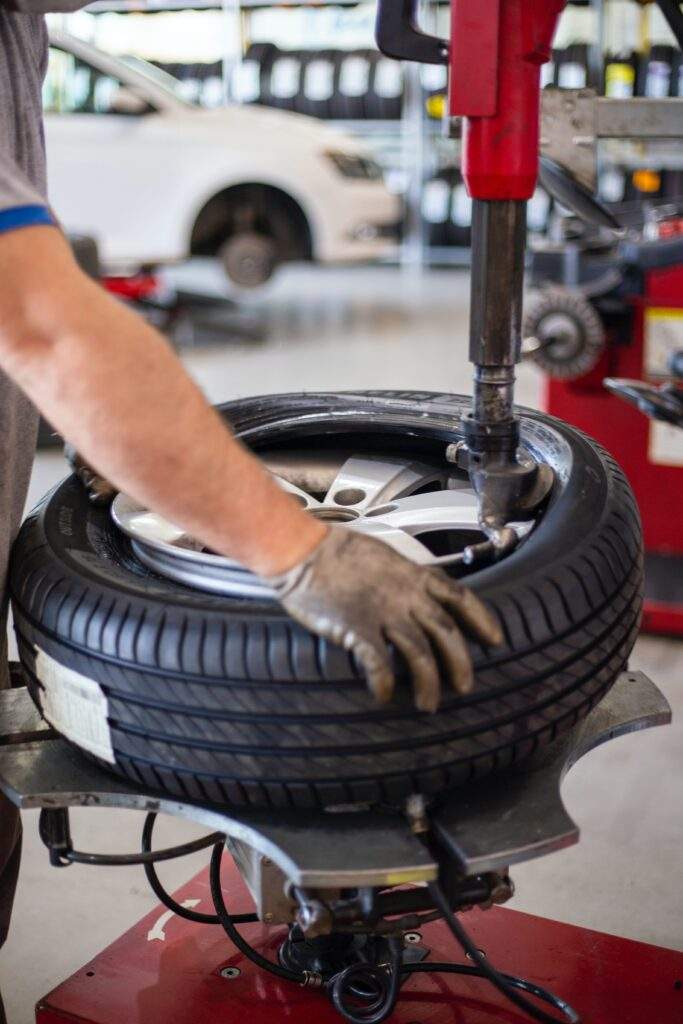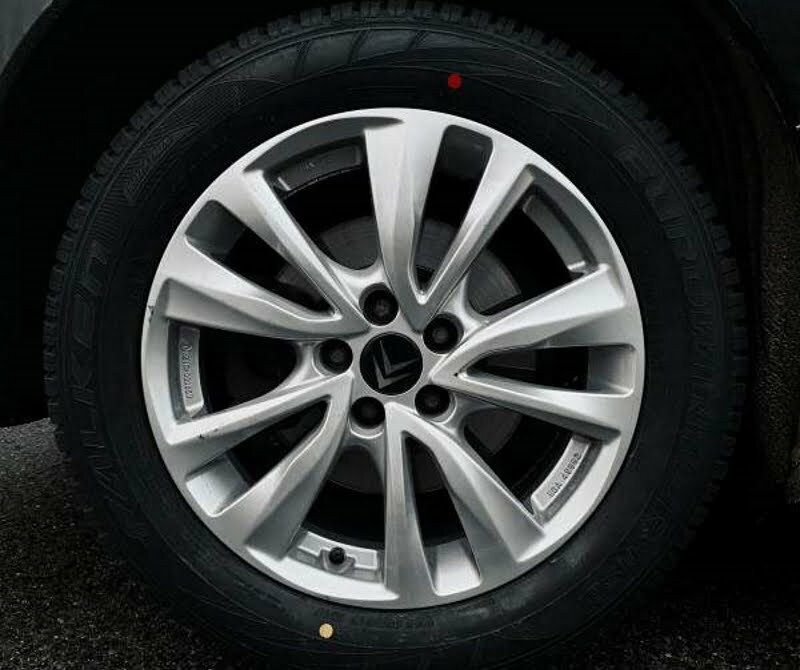These red and yellow dots on tyres are balancing dots and are used by tyre fitters in the garage and tyre fitting industry to help fit and balance tyres.
These red and yellow dots on tyres are not always visible, and on some older tyres may have been worn off, also there is no guarantee they have been used correctly in the past, so read on and see how to correctly use these dots on tyres to correctly position, fit and balance vehicle tyres.

What are coloured dots on tyres for?
The red and yellow dots on the outside side wall of your tyre are commonly known as balancing dots within the garage equipment and tyre fitting industry. These dots help the technicians to ensure that the wheels are as perfectly balanced as possible and help the tyre fitter to achieve this using the least amount of stick-on or knock-on wheel balancing weight possible.
What are red dots on tyres called?
The red coloured balancing dot signifies the highest point in the tyre, sometimes referred to as the “radial force variation first harmonic maximum”, when the tyre is spinning, the force on the tyre and wheel when fitted will be at its maximum at the point of this red dot.
What does a red dot on a tyre mean?
The red balancing dot indicates the tyre’s high point.
What are yellow dots on tyres called?
The yellow dot on a tyre is called the low point dimple or “light static balance point”.
What does a yellow dot on a tyre mean?
The yellow coloured balancing dot or dimple signifies the lowest point in the tyre, sometimes referred to as the “low point dimple” or “light static balance point”, when the tyre is spinning, the force on the tyre and wheel when fitted will be at it’s lowest at the point of this yellow dot.
What are the red and yellow dots on new tyres?
The red dot may be printed, drilled or marked out by a sticker – to signify the tyre’s highest and heaviest point.
The yellow dot may be printed, drilled or marked out by a sticker – to signify the tyre’s lowest and lightest point.
How to use the red and yellow dots when fitting tyres?
Please be aware that if there is a red dot on the tyre then the yellow dot should be ignored. In this instance, the red dot should be lined up with either the “low point dimple” (on steel wheels) or next to the valve stem on alloy wheels.
However, if there is no red dot, then the yellow dot should be positioned next to the valve stem.
These red and yellow dots should be looked for before using a tyre machine to mount the tyre, to ensure that the ideal balance is set up from the off, and before any balancing of the wheels is done using your wheel balancing machine, as this will ensure minimal wheel balance weights are required.

Why do the red and yellow dots get positioned on wheels as they do?
The tyre is designed to be slightly lighted in the lower area where the yellow dot is found, and the tyre rubber is slightly thicker at the top where the red dot is found.
On alloy wheels, and motorcycle wheel rims the valve stem marks the heaviest point of the wheel. By lining up the valve stem on the wheel rim with the lightest point of the tyre it helps to balance the weight out in this area.
However on steel wheels, there is a dimple or mark that designates this as the thinnest part of the wheel, therefore the lightest part of the wheel rim, and hence matching this up to the red dot, which is the heaviest part of the tyre once again helps to balance the weight distribution.
Ensuring this red and yellow dot positioning before mounting the tyre isn’t essential, but it just makes sense, as the next step of the process would be to balance the wheel, if you have already balanced out the known heavy and light points in both the wheel and the tyre, you should be able to balance the wheel and tyre on the wheel balancing machine using fewer weights, and therefore less cost to your garage, tyre fitting business or MOT Bay.
As a precaution, if there is only one dot on the tyre then simply match this to the valve stem as this is most likely to be the light point of the tyre, and we already know that the stem position on the wheel rim causes this to be the heaviest part of the wheel, so these will help to cancel each other out.
This last scenario tends to be the case with motorcycle wheels and tyres, there is not always a red or yellow dot on these, and therefore one dot (if present) will simply be matched to the tyre valve position before fitting the tyre.
If you have any tyre-changing questions please in touch today on 0113 469 0572 or using our online contact form.


